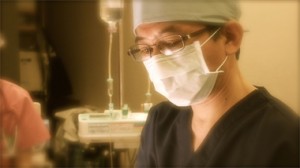
昭和62年北里大学医学部卒業。形成外科、一般外科、整形外科、麻酔科、救命救急科等広い分野の診療を手がける。平成9年北里研究所病院形成美容外科医長、茅ヶ崎徳洲会総合病院形成外科・美容外科部長を歴任。平成10年4月より銀座美容外科副院長として父子で美容外科診療に携わる。
平成20年4月より銀座・いけだクリニックの顧問医師に就任。
<資格・免許>
- 医学博士
- 日本形成外科学会認定専門医
- 日本美容外科学会専門医
- 世界美容外科学会正会員
- 日本美容医療協会正会員
- 平成20年4月銀座いけだクリニック顧問医師に就任













Excellent article. Keep writing such kind of information on your blog.
Im really impressed by it.
Hi there, You’ve performed an excellent job.
I will certainly digg it and for my part suggest to my friends.
I’m sure they will be benefited from this web site.
Feel free to visit my web site :: is the genius wave a scam
walking our dogs,ラブドール 画像we encounter numerous opportunities to strike up conversations with people whom we might otherwise have never met.
Tiny shards of plastic are increasingly infiltrating our brains, study says
гей порно
Human brain samples collected at autopsy in early 2024 contained more tiny shards of plastic than samples collected eight years prior, according to a preprint posted online in May. A preprint is a study which has not yet been peer-reviewed and published in a journal.
“The concentrations we saw in the brain tissue of normal individuals, who had an average age of around 45 or 50 years old, were 4,800 micrograms per gram, or 0.5% by weight,” said lead study author Matthew Campen, a regents’ professor of pharmaceutical sciences at the University of New Mexico in Albuquerque.
“Compared to autopsy brain samples from 2016, that’s about 50% higher,” Campen said. “That would mean that our brains today are 99.5% brain and the rest is plastic.”
That increase, however, only shows exposure and does not provide information about brain damage, said Phoebe Stapleton, an associate professor of pharmacology and toxicology at Rutgers University in Piscataway, New Jersey, who was not involved in the preprint.
“It is unclear if, in life, these particles are fluid, entering and leaving the brain, or if they collect in neurological tissues and promote disease,” she said in an email. “Further research is needed to understand how the particles may be interacting with the cells and if this has a toxicological consequence.”
The brain samples contained 7% to 30% more tiny shards of plastic than samples from the cadavers’ kidneys and liver, according to the preprint.
“Studies have found these plastics in the human heart, the great blood vessels, the lungs, the liver, the testes, the gastrointestinal tract and the placenta,” said pediatrician and biology professor Dr. Philip Landrigan, director of the Program for Global Public Health and the Common Good and the Global Observatory on Planetary Health at Boston College.
“It’s important not to scare the hell out of people, because the science in this space is still evolving, and nobody in the year 2024 is going to live without plastic,” said Landrigan, who was not involved with the preprint.
we can feel more integrated.ラブドール 女性 用We gain valuable insight into our triggers and reactions,
As for the sales in general,エロ ラブドールthey have greatly increased due to COVID-19.